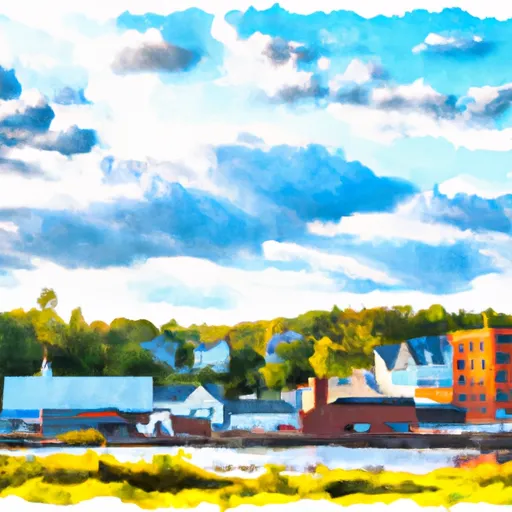-
 Snoflo Premium
Snoflo Premium
Get unlimited access to all our content
With no Ad interruptions! - Start Your Free Trial Login with existing account
Lincoln
Eden Index
Climate
7.4
•
Recreation
0.6
•
Community
2.0
•
Safeguard
3.7/10

Lincoln, Maine is a charming town located in Penobscot County, in the northeastern part of the United States. The town experiences a humid continental climate, with cold, snowy winters and mild, pleasant summers. Average temperatures range from around 15°F (-9°C) in winter to 75°F (24°C) in summer.
Lincoln is situated along the Penobscot River, making it an ideal location for various hydrological activities. The river provides opportunities for fishing, boating, and kayaking. Additionally, numerous lakes and ponds in the area offer opportunities for swimming, canoeing, and paddleboarding.
Outdoor enthusiasts will find a range of recreational opportunities in Lincoln. The town is surrounded by vast forested areas, making it perfect for hiking, camping, and wildlife observation. The nearby Lincoln Woods Trails provide picturesque views and are popular among nature lovers.
During the winter months, Lincoln becomes a haven for winter sports enthusiasts. The nearby Sugarloaf and Sunday River ski resorts offer excellent downhill skiing and snowboarding opportunities. Cross-country skiing, snowshoeing, and snowmobiling are also popular activities in the area.
Overall, Lincoln, Maine is a beautiful town that offers a diverse range of outdoor recreation opportunities, making it an appealing destination for nature lovers and adventure seekers alike.
What is the Eden Index?
The Snoflo Eden Index serves as a comprehensive rating system for regions, evaluating their desirability through a holistic assessment of climate health, outdoor recreation opportunities, and natural disaster risk, acknowledging the profound impact of these factors on livability and well-being.
Climate Health Indicator (CHI): 7.4
Lincoln receives approximately
1155mm of rain per year,
with humidity levels near 76%
and air temperatures averaging around
6°C.
Lincoln has a plant hardyness factor of
4, meaning
plants and agriculture in this region thrive during a short period during spring and early summer. Most
plants will die off during the colder winter months.
By considering the ideal temperature range, reliable water supplies, clean air, and stable seasonal rain or snowpacks, the Climate Health Indicator (CHI) underscores the significance of a healthy climate as the foundation for quality living.
A healthy climate is paramount for ensuring a high quality of life and livability in a region, fostering both physical well-being and environmental harmony. This can be characterized by ideal temperatures, reliable access to water supplies, clean air, and consistent seasonal rain or snowpacks.
Weather Forecast
Streamflow Conditions
Penobscot
Area Rivers
Penobscot
Snowpack Depths
Penobscot
Reservoir Storage Capacity
Penobscot
Groundwater Levels
Recreational Opportunity Index (ROI): 0.6
The Recreational Opportunity Index (ROI) recognizes the value of outdoor recreational options, such as parks, hiking trails, camping sites, and fishing spots, while acknowledging that climate plays a pivotal role in ensuring the comfort and consistency of these experiences.
Access to outdoor recreational opportunities, encompassing activities such as parks, hiking, camping, and fishing, is crucial for overall well-being, and the climate plays a pivotal role in enabling and enhancing these experiences, ensuring that individuals can engage in nature-based activities comfortably and consistently.
Camping Areas
| Campground | Campsites | Reservations | Toilets | Showers | Elevation |
|---|---|---|---|---|---|
| Great Pond Military | None | 302 ft |
Nearby Ski Areas
Catastrophe Safeguard Index (CSI):
The Catastrophe Safeguard Index (CSI) recognizes that natural disaster risk, encompassing floods, fires, hurricanes, and tornadoes, can drastically affect safety and the overall appeal of an area.
The level of natural disaster risk in a region significantly affects safety and the overall livability, with climate change amplifying these risks by potentially increasing the frequency and intensity of events like floods, fires, hurricanes, and tornadoes, thereby posing substantial challenges to community resilience and well-being.
Community Resilience Indicator (CRI): 2.0
The Community Resilience Indicator (CRI) recognizes that education, healthcare, and socioeconomics are crucial to the well-being of a region. The CRI acknowledges the profound impact of these elements on residents' overall quality of life. By evaluating educational resources, healthcare accessibility, and economic inclusivity, the index captures the essential aspects that contribute to a thriving community, fostering resident satisfaction, equity, and social cohesion.

